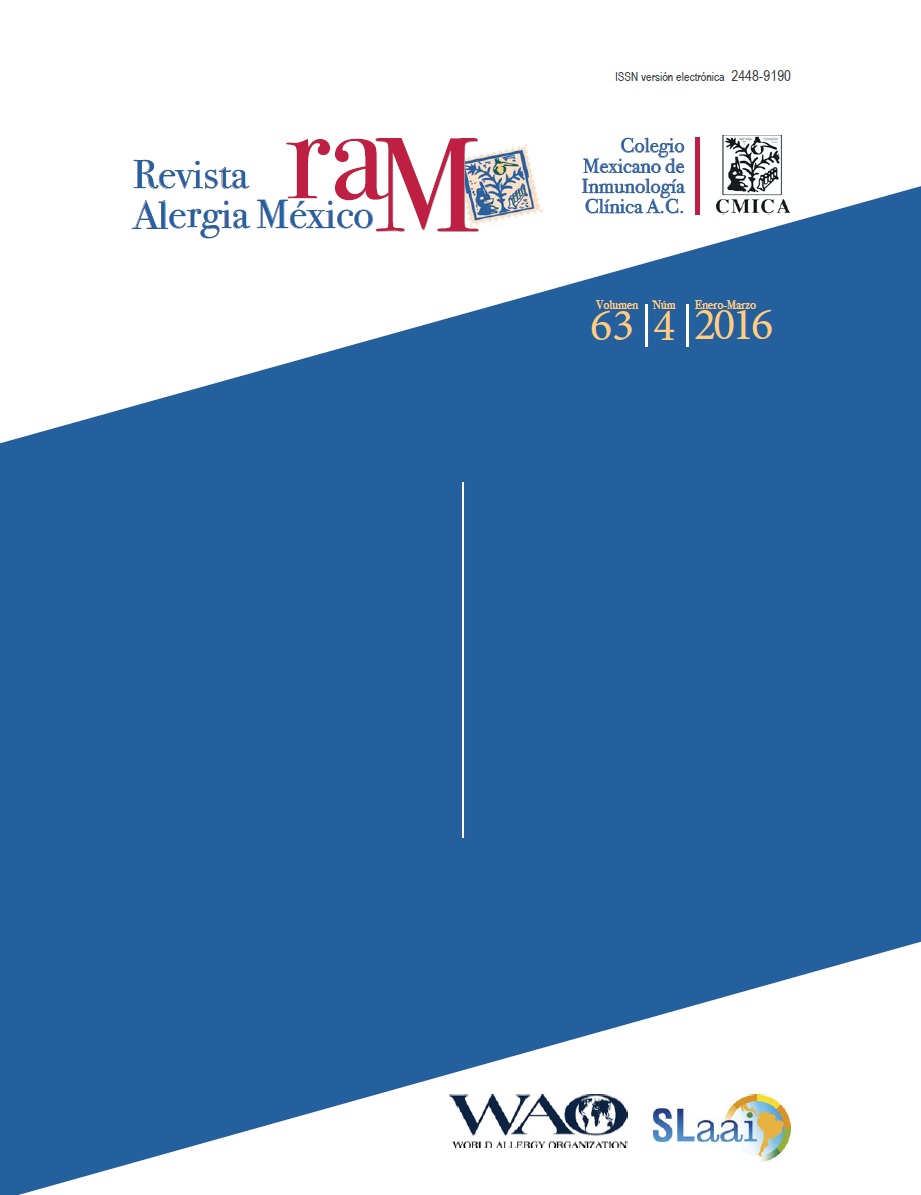Resumen
Introducción: El factor de transferencia (FT) es el extracto dializable de leucocitos con propiedades de transferencia de inmunidad celular. Su uso se ha extendido en el tratamiento de una amplia gama de padecimientos inmunológicos, infecciosos y como coadyuvante de padecimientos oncológicos. A pesar de ello, no se conocen completamente aspectos importantes de su perfil proteico, concentraciones de componentes y mecanismos de acción.
Objetivos: Analizar los perfiles proteicos de diferentes factores de transferencia comercializados en México.
Métodos: Se obtuvieron y analizaron 6 FT comercializados en México. Se realizó la cuantificación de proteínas por el método de Bradford, cromatografía líquida de alta resolución (HPLC) y electroforesis en geles de poliacrilamida (SDS-PAGE). Todas las muestras fueron analizadas por duplicado.
Resultados: Las concentraciones de proteínas totales de todos los FT analizados fueron menores de 0.2 mg/mL. Los perfiles cromatográficos mostraron diferencias en algunos FT. La concentración de proteínas resultó de 6 hasta casi mil veces más baja en comparación con lo informado por algunos fabricantes.
Conclusión: Casi la totalidad de los factores de transferencia comercializados en México carecen de un etiquetado y registro sanitario que cumpla con las normas oficiales vigentes.
Referencias
Lawrence HS. The transfer in humans of delayed hypersensitivity to streptococcal M substance and to tuberculin with disrupted leukocytes. J. Clin Invest. 1955;34(2):219-232. Disponible en: https://www. ncbi.nlm.nih.gov/pmc/articles/PMC438618/
Dupont B, Ballow M, Hansen JA, Quick C, Yunis EJ, Good RA. Effect of transfer factor therapy on mixed lymphocyte culture reactivity. Proc Natl Acad Sci USA. 1974;71(3):867-871. Disponible en: http://www. pnas.org/content/71/3/867.full.pdf
Lawrence HS, Pappenheimer AM Jr. Transfer of delayed hypersensitivity to diphtheria toxin in man. J Exp Med. 1956;104:321-335. Disponible en: https://www.ncbi.nlm.nih.gov/pmc/articles/PMC2136574/
Borkowsky W, Suleski P, Bhardwaj N, Lawrence HS. Antigen-specific activity of murine leukocyte dialysates containing transfer factor on human leukocytes in the leukocyte migration inhibition (LMI) assay. J Immunol. 1981;12681):80-82.
Lawrence HS. The transfer in humans of delayed skin sensitivity to streptococcal M substance and to tuberculin with disrupted leucocytes. J Clin Invest. 1955;34(2):219-230. Disponible en: https://www.ncbi. nlm.nih.gov/pmc/articles/PMC438618/
Kirkpatrick CH. Transfer factors: identification of conserved sequences in transfer factor molecules. Mol Med. 2000;6(4):332-341. Disponible en: http://static.smallworldlabs.com/molmedcommunity/content/ pdfstore/332.pdf
Kirkpatrick CH, Hamad AR, Morton LC. Murine transfer factors: dose-response relationships and routes of administration. Cell Immunol. 1995;164(2):203-206.
Sánchez-González DJ, Sosa-Luna CA, Vásquez-Moctezuma I. Factores de transferencia en la terapéutica médica. Med Clin. 2011;137(6):273-277. Disponible en: http://www.elsevier.es/es-revista-medicina-clinica-2-articulo-factores-transferencia-terapeutica-medica-S0025775310005774
García-Martín MC, Cruza-Cáceros M, Sánchez-Rodríguez A, Abdo-Rodríguez A. Factor de transferencia y extractos bacterianos en asmáticos con infecciones respiratorias a recurrentes. Alergia Inmunol Pediatr. 1998;17(4):124-127.
Gellin b, Modlin JF, Casadevall A, Pirofski LA. Adjunctive immune therapy for fungal infections. Clin Infect Dis. 2001;33(7):1048-1056. Disponible en: http://cid.oxfordjournals.org/content/33/7/1048.full
Aguilar-Ríos JM, León-Burgos V, Baeza-Bacab MA. [Acute asthma prevalence in children and teenagers from Merida, Yucatan, Mexico]. Rev Alerg Mex. 2009;56(1):3-8.
Flores-Sandoval G, Gómez-Vera J, Orea-Solano M, López-Tiro J, Serrano E, Rodriguez A, Estrada- Parra S, Jiménez-Saab N [Transfer factor as specific immunomodulator in the treatment of moderate-severe atopic dermatitis]. Rev Alerg Mex. 2005;52(6):215-220.
Viza D, Fudenberg HH, Palareti A, Ablashi D, De Vinci C, Pizza G. Transfer factor: an overlooked potential for the prevention and treatment of infectious diseases. Folia Biol (Praha). 2013;59(2):53-67.
Li C, Huang L, Wang Y, Li X, Liang S, Zheng Y. Preparation and properties of the specific anti-influenza virus transfer factor. Head Face Med. 2010;6(10):22. doi: 10.1186/1746-160X-6-22
Estrada-Parra S, Nagaya A, Serrano E, Rodriguez O, Santamaria V, Ondarza R, Chávez R, Correa B, Monges A, Cabezas R, Calva C, Estrada-García I. Comparative study of transfer factor and acyclovir in the treatment of herpes zoster. Int. J. Immunopharmacol. 1998;20(10):521-535.
Viza D. AIDS and transfer factor: myths, certainties and realities. Biotherapy. 1996;(1-3):17-26.
Russian Health Ministry. [Blog]. Ministry of Health and Social Development of Russian Federation. Transfer factor use in immunorehabilitation after infectious-imflamatory and somatic diseases. Methodological letter. Moscow, 2004. Disponible en: http://russianhealthministry.blogspot.mx/2008/01/6-conclusion.html?m=0
Goergescu C. Effect of long-term therapy with transfer factor in rheumatoid arthritis. Med Interne. 1985 23(2):135-140.
Lamoureux G, Cosgrove J, Duquette P, Lapierre Y, Jolicoeur R, Vanderland F. A clinical and immunological study of the effects of transfer factor on multiple sclerosis patients. Clin Exp Immunol. 1981;43(3):557- 564. Disponible en: https://www.ncbi.nlm.nih.gov/pmc/articles/PMC1537193/
Ojeda MO, van’t Veer C, Fernández-Ortega CB, Araña-Rosainz MJ, Buurman WA. Dailyzable leukocyte extract differentially regulates the production of TNF-alpha, IL-6 & IL-8, in bacterial component-activate leukocytes and endothelial cells. Inflamm Res. 2005;54(2):74-81.
Wang RN, Wang YB, Geng JW, Guo DH, Liu F, Chen HY, Zhang HY, Cui BA, Wei ZY. Enhancing immune responses to inactivated porcine parvovirus oil emulsion vaccine by co-inoculating porcine transfer factor in mice. Vaccine. 2012;30(35):5246-5252. doi: 10.1016/j.vaccine.2012.05.077
Viza D, Fudenberg HH, Palareti A, Ablashi D, De Vinci C, Pizza G. Transfer factor: an overlooked potential for the prevention and treatment of infectious diseases. Folia Biol (Praha). 2013;59(2):53-67. Disponible en: http://fb.cuni.cz/volume-59-2013-no-2#articFB2013A0007
Bradford MM. A rapid and sensitive method for the quantitation of micro-gram quantities of protein utilizing the principle of protein dye binding. Anal Biochem. 1976;72(1-2):248-254. doi:10.1016/0003-2697(76)90527-3
Laemmli UK. Cleavage of structural proteins during the assembly of the head of bacteriophage T4. Nature. 1970;227(5259):680-685. doi:10.1038/227680a0
Farmacopea de los Estados Unidos Mexicanos. Undécima edición. México: Secretaría de Salud; 2014.
Norma Oficial Mexicana NOM-253-SSA1-2012, para la disposición de sangre humana y sus componentes con fines terapéuticos. Diario Oficial de la Federación 2012 Oct 26. Disponible en: http:// www.dof.gob.mx/nota_detalle.php?codigo=5275587&fecha=26/10/2012
Norma Oficial Mexicana NOM-072-SSA1-2012, etiquetado de medicamentos y de remedios herbolarios. Diario Oficial de la Federación 2012 Nov 21. Disponible en: http://dof.gob.mx/nota_detalle.php?codigo= 5278341&fecha=21/11/2012
Norma Oficial Mexicana NOM-059-SSA1-2015, buenas prácticas de fabricación de medicamentos. Diario Oficial de la Federación 2012 Oct 11. Disponible en: http://www.cofepris.gob.mx/MJ/Documents/ Normas/050216nom059.pdf
Norma Oficial Mexicana NOM-251-SSA1-2009, prácticas de higiene para el proceso de alimentos, bebidas o suplementos alimenticios. Diario Oficial de la Federación 2010 Mar 1. Disponible en: http:// dof.gob.mx/nota_detalle.php?codigo=5133449&fecha=01/03/2010
Norma Oficial Mexicana NOM-051-SCFI/SSA1-2010, especificaciones generales de etiquetado para alimentos y bebidas no alcohólicas preenvasados-Información comercial y sanitaria. Diario Oficial de la Federación 2010 Abr 5. Disponible en: http://dof.gob.mx/nota_detalle.php?codigo=5137518&fec ha=05/04/2010

Esta obra está bajo una licencia internacional Creative Commons Atribución-NoComercial 4.0.
Derechos de autor 2016 Revista Alergia México





